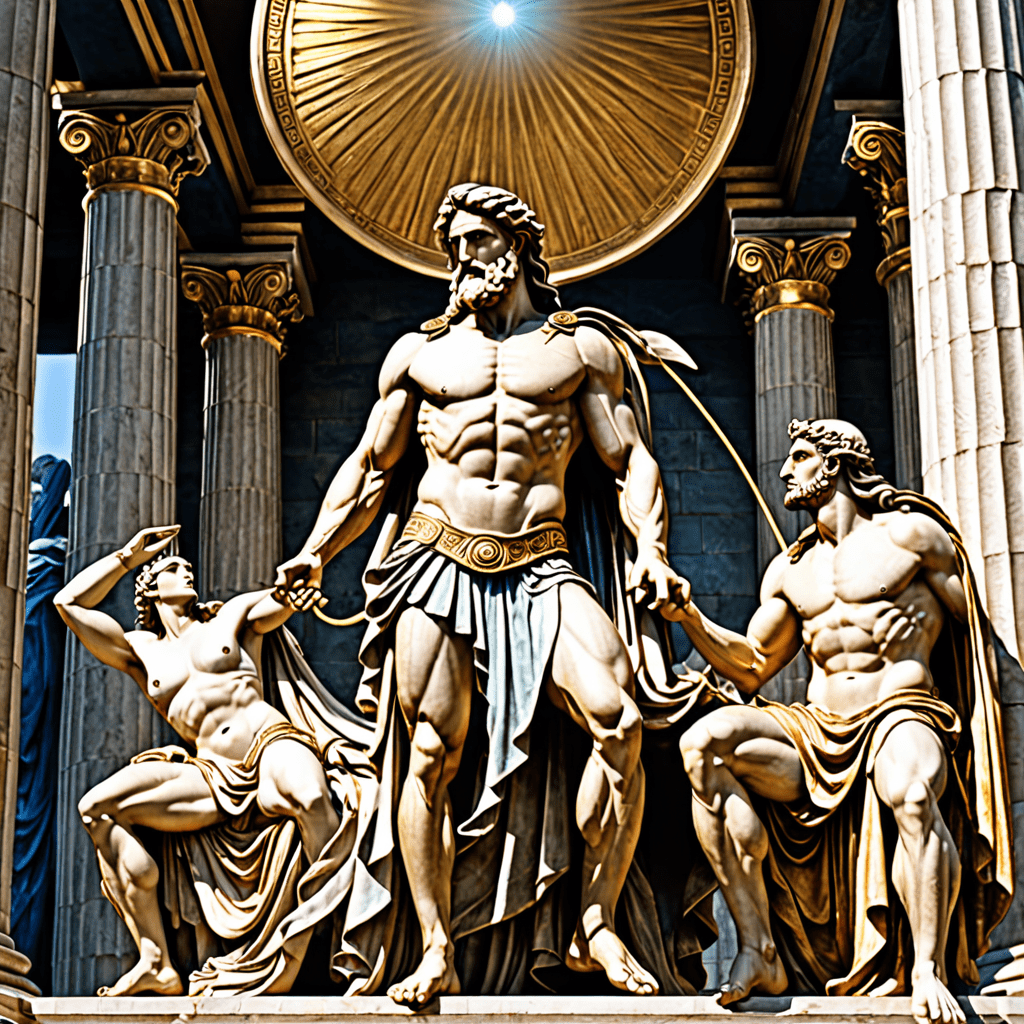The Flood as a Symbol of Change: Myths That Inspire Transformation
Introduction: Understanding the Flood as a Symbol
The flood myth is a powerful narrative present in various cultures around the world, serving as a profound symbol of transformation. Defined as stories in which a great deluge leads to the destruction of humanity or a part of the world, these myths often signify a cyclical pattern of death and rebirth. They reflect humanity’s deep-seated fears and hopes regarding change, renewal, and the possibility of new beginnings.
Throughout history, the significance of transformation has been a central theme in mythological narratives. These stories captivate our imagination, illustrating the potential for rebirth and the cleansing of the past. As we explore flood myths from diverse cultures, we uncover not only their universal themes but also the unique interpretations that inspire change and resilience.
The Universality of Flood Myths
Flood myths are remarkably common across cultures, each telling a story of destruction followed by renewal. Notable examples include:
- The Epic of Gilgamesh: In ancient Mesopotamia, this epic recounts a great flood sent by the gods to wipe out humanity, sparing only Utnapishtim, who builds an ark.
- Noah’s Ark: In the Biblical narrative, Noah is instructed by God to build an ark to save his family and pairs of animals from a divine flood meant to cleanse the earth of wickedness.
- Indigenous Myths: Various Indigenous cultures, such as the Cherokee and the Hopi, have their own flood narratives that reflect their relationship with nature and the moral lessons inherent in their beliefs.
Despite their differences, these stories share common themes such as divine retribution, the importance of obedience, and the promise of a new beginning, highlighting humanity’s struggle with morality and the forces of nature.
The Archetype of Destruction and Renewal
The role of destruction in flood myths is crucial; it often symbolizes the need to clear away the old to make way for the new. This archetype can be seen as a necessary precursor to transformation. Floods wash away the remnants of the past, creating a blank slate for new growth and opportunities. For instance:
- In many flood myths, the survivors emerge with a renewed sense of purpose and responsibility.
- Floods often lead to new alliances and relationships, as shared experiences of trauma bind communities together.
By understanding floods as a metaphor for destruction and renewal, we can begin to appreciate the transformative power they hold in our lives.
Floods as a Catalyst for Personal Transformation
Psychologically, experiencing a ‘flood’ in one’s life—whether a significant loss, trauma, or sudden change—can act as a catalyst for profound personal transformation. Many individuals report undergoing significant changes in their outlook and priorities after facing such crises. Case studies illustrate this phenomenon:
- Rebuilding After Loss: Individuals who have lost loved ones to natural disasters often find renewed purpose in helping others and advocating for change.
- New Perspectives: Those who experience life-altering events may reassess their values and relationships, leading to a more fulfilling life.
These personal transformations echo the larger narrative of flood myths, where adversity leads to growth and renewal.
Cultural Interpretations of Flood Myths
In exploring specific flood myths, we can uncover the moral and ethical lessons they impart. For example:
- Noah’s Ark: This story teaches the importance of faith, obedience, and the preservation of life in the face of moral decay.
- The Epic of Gilgamesh: It emphasizes the theme of mortality and the quest for eternal life, reflecting humanity’s desire to overcome death.
- Hindu Mythology: In the Matsya Purana, the god Vishnu takes the form of a fish to save a king and the sacred texts, symbolizing the preservation of knowledge and life.
These interpretations highlight the cultural values and beliefs surrounding the themes of judgment, morality, and the possibility of redemption.
Floods in Modern Context: Natural Disasters and Societal Change
Recent floods serve as a stark reminder of nature’s power and its ability to reshape communities. The impact of such disasters can lead to significant societal changes, including:
- Community Resilience: Floods often foster a spirit of cooperation among affected individuals, leading to stronger community bonds.
- Policy Changes: Natural disasters can prompt governments to implement better disaster preparedness and response strategies.
- Environmental Awareness: Increased visibility of climate change impacts can lead to greater advocacy for sustainable practices.
These examples illustrate how natural disasters can catalyze social transformation, prompting communities to adapt and grow in the face of adversity.
Art and Literature: The Flood as a Metaphor
Flood imagery has been a powerful metaphor in art and literature, conveying themes of change and transformation. Notable works that feature floods as central motifs include:
- The Flood by Paul Gauguin: This painting captures the chaos of floodwaters, symbolizing the turmoil of human emotions.
- The Grapes of Wrath by John Steinbeck: In this novel, floods symbolize the struggles of displaced families during the Great Depression, reflecting societal upheaval.
- The Deluge by John Martin: This artwork portrays the biblical flood with dramatic intensity, emphasizing the themes of destruction and rebirth.
Through these artistic expressions, the flood serves as a lens through which we can explore our own experiences of change and resilience.
Spiritual and Religious Perspectives on Floods and Change
Different religions interpret floods as divine intervention or judgment, providing insights into the human experience of suffering and transformation. For instance:
- Christianity: The flood is often seen as God’s judgment on sin, yet it also represents hope through salvation.
- Hinduism: Floods are viewed as a means of cleansing the earth and restoring balance, reflecting the cyclical nature of existence.
- Indigenous Beliefs: Many Indigenous cultures view floods as sacred events that carry messages from the spirits, guiding community actions.
These spiritual interpretations highlight the role of faith in transforming adversity into opportunities for growth and renewal.
The Psychological Impact of Flood Myths on Societal Behavior
Flood narratives influence collective consciousness and societal values, shaping how communities respond to change. Storytelling plays a crucial role in this process. For example:
- Cultural Resilience: Flood myths promote resilience by providing frameworks for understanding and coping with loss and change.
- Collective Memory: These narratives become part of a society’s collective memory, influencing behaviors and attitudes toward disaster preparedness.
Through the power of storytelling, flood myths help communities navigate the complexities of change, reinforcing shared values and collective identity.
Conclusion: Embracing Change Through the Lens of Flood Myths
The enduring power of flood myths to inspire transformation is a testament to their relevance in contemporary society. By reflecting on these narratives, we can embrace personal and societal challenges as opportunities for growth and renewal. Just as the flood clears the way for new beginnings, we too can find strength in adversity and emerge transformed. As we navigate the floods of our lives, let us remember that change, while often daunting, can lead to profound and positive transformations.




